Exploring Who Is the Irish God of Love in Irish Mythology
Who Is the Irish God of Love? Irish mythology contains fascinating gods, goddesses, and magical creatures with unique powers and stories.
Love holds a special place among these figures, shaping many of the most memorable tales. In Irish culture, love isn’t just about romance—it’s about beauty, passion, and the deep connections that bind people together.
No surprise, love is at the heart of many ancient myths, where gods and mortals strive to find and protect it.
One of the most beloved figures in Irish mythology associated with love is Aengus, the God of Love. Known for his beauty, charm, and youthful spirit, Aengus represents the power of love, beauty, and desire.
In this post, we’ll look closer at Aengus’s life and legendary love story, exploring how he became the symbol of eternal youth and passion in Irish myth.
From his enchanting journey to find his true love to his connection with the natural world, Aengus is a god whose story continues to inspire.
Who Is the God of Love?
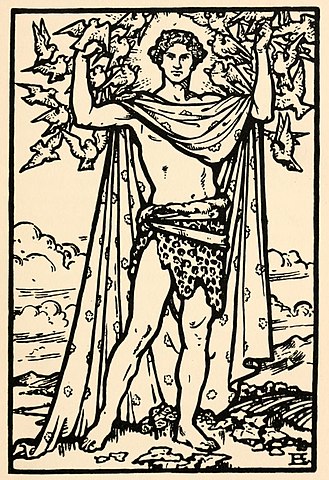
In Irish mythology, the God of Love is Aengus (sometimes spelt Oengus). Aengus is a central figure who represents the ideals of love, beauty, and desire.
He’s often depicted as a youthful, handsome god who inspires affection and passion in those around him. His charm and romantic nature make him one of the most captivating gods in Irish folklore.
Aengus’s story is about the pursuit of love and the lengths he goes to to be with the one he desires. He is deeply connected to the themes of beauty, youth, and transformation common in love stories.
Whether through music, dreams, or even magical transformations, Aengus’s influence in matters of the heart is powerful and enduring.
Aengus’s Role in the Tuatha Dé Danann
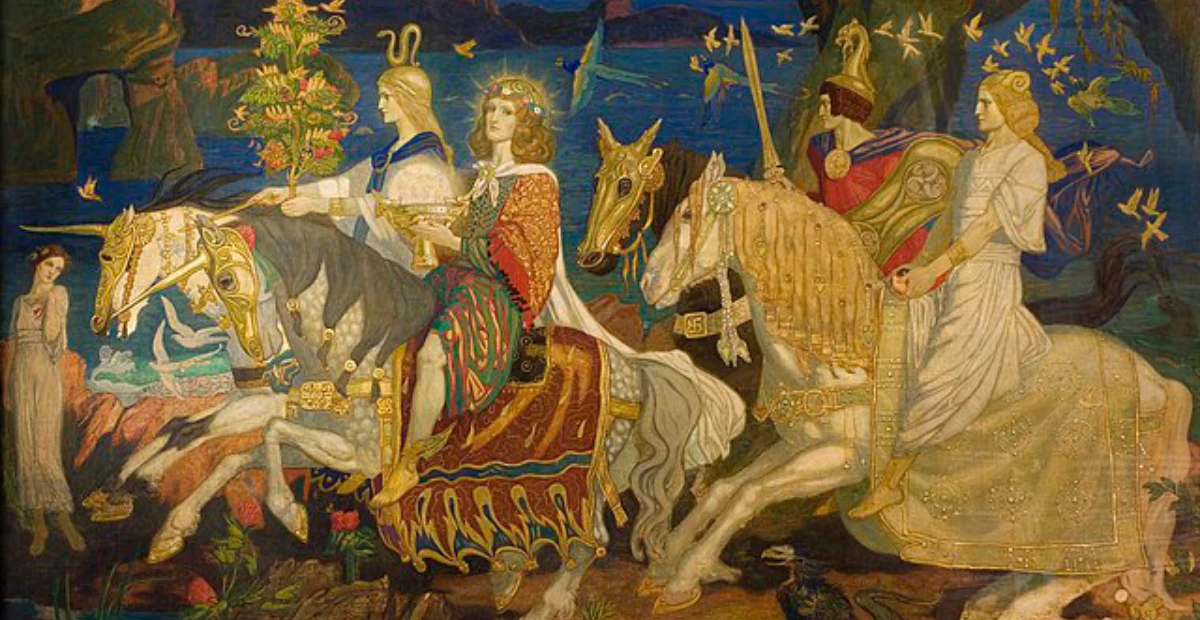
Aengus is a member of the Tuatha Dé Danann, a group of gods and goddesses in Irish mythology who are often considered the supernatural ancestors of the Irish people.
The Tuatha Dé Danann are known for their magical powers, wisdom, and ability to shape the world around them. As part of this divine family, Aengus is linked to the other gods through his exceptional qualities of love and beauty.
His father is Dagda, the powerful chief of the Tuatha Dé Danann, and his mother is Boann, the goddess of the River Boyne. As the son of these two great deities, Aengus inherits their strength and connection to the land and natural forces.
However, his association with love and beauty sets him apart, making him a unique and cherished figure within the pantheon of the Tuatha Dé Danann.
Aengus’s presence in the Tuatha Dé Danann reflects the importance of love as a force that shapes not just the lives of gods but also the lives of mortals, intertwining beauty, passion, and transformation throughout Irish mythology.
Aengus’s Birth and Parentage
Family Lineage
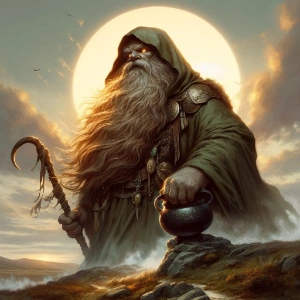
Aengus’s birth is an intriguing part of his story, tied to mystery and divine power. His father is Dagda, the chief god of the Tuatha Dé Danann, known for his strength, wisdom, and magic.
Dagda was a mighty and influential figure who ruled over the land and controlled the harvest, ensuring abundance for his people. His mother is Boann, the goddess of the River Boyne, a sacred river in Ireland.
Boann is associated with the flow of life and the abundance of nature, making her an essential figure in Irish mythology.However, Aengus’s conception is quite unusual. According to some versions of the myth, Boann was not solely with Dagda when she became pregnant with Aengus.
She had also been with Elatha, a king of the Fomorians (a race of supernatural beings). Aengus is said to be the child of both Dagda and Elatha. To conceal the truth and avoid conflict, Dagda raised Aengus as his own, and Aengus grew up under his care as a beloved son.
This unusual parentage adds a layer of complexity to Aengus’s identity, as he is connected to the Tuatha Dé Danann’s divine world and the Fomorians’ mystical forces.
Mythological Significance
Aengus’s birth is deeply tied to essential Irish mythology themes, especially fertility, abundance, and love. His mother, Boann, is the River Boyne goddess, symbolising the flow of life and fertility.
Rivers in many cultures, including Irish, are seen as symbols of vitality and the nurturing of life, making Aengus a child born from the very essence of nature’s abundance. Through his father, Dagda, Aengus is also connected to the themes of fertility and growth, as Dagda is often associated with the earth’s harvest and bounty.
Together, these divine figures imbue Aengus with the power to inspire love and beauty, making him not only a god of romantic desire but also a symbol of the life force that nurtures and sustains the world. Aengus’s parentage and the unusual circumstances of his conception reflect the merging of different worlds—the vibrant forces of nature and the deep, transformative power of love.
In this way, Aengus represents the connection between the divine and the natural, the mystical and the romantic, making him an enduring figure in Irish mythology.
Aengus’s Love Story with Caer Ibormeith
The Dream of Aengus
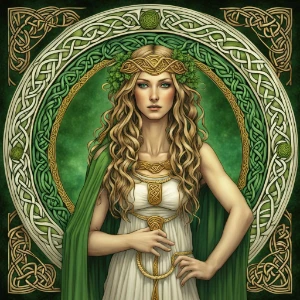
One of the most famous stories in Irish mythology is the love story of Aengus and Caer Ibormeith, a beautiful maiden with whom Aengus falls in love through a dream. Aengus dreams of Caer for an entire year, her face haunting his sleep each night. She is graceful, enchanting, and radiant, unlike any woman he has ever seen.
These dreams fill him with a deep longing and desire to be with her. Aengus knows that he must find her, but he has no idea where she is or how to reach her.When Aengus wakes from his dreams, he is filled with an unshakeable love for Caer and knows he must meet her in person.
His passion is so strong that he thinks of nothing but finding her and winning her love. He journeys to find the woman of his dreams, determined to make her his own.
Transformation and Trial
As Aengus searches for Caer, he discovers something surprising—Caer is under a powerful spell that transforms her into a swan. Every year, she and other maidens are cursed to take the form of swans and swim in a lake for a time, only to return to their human forms later. Despite the magical transformation, Aengus’s love for her remains unchanged.
He is undeterred by the fact that she is a swan and not a human woman, and he is determined to break the spell or find a way to be with her.
Aengus visits a wise figure named Midir, who helps him understand the magic that has placed Caer under this curse. Midir tells him that Caer is not only a swan by day but can only take her human form on certain nights. However, this is a delicate and difficult matter, for the spell binds her.
The challenge for Aengus is not just to find Caer but to gain her love despite the magical barrier.
The Reunion
Undeterred by the task’s difficulty, Aengus eventually tracks Caer and the other swan maidens down. In a moment of deep connection, he calls to her by name. When she hears his voice, something miraculous happens—Caer is freed from the spell. She transforms into her human form and finally reunites with Aengus, who has waited so long to be with her.
Aengus and Caer’s reunion is a powerful symbol of eternal love and transformation. Aengus’s unwavering devotion to Caer, even when she was a swan, shows the depth of his love and power. That love has to overcome obstacles, no matter how magical or complex. Their love story is one of the most enduring in Irish mythology. It represents romantic love and the idea of love as a force that can transcend time and change.
In the end, Aengus and Caer’s love is pure, eternal, and transformative. It shows how love can break any barrier, no matter how powerful, and true love never fades, even when faced with magic and transformation.
Aengus’s Symbols and Attributes
Birds and Swans
Swans and birds play a significant role in Aengus’s story, symbolising many qualities that Aengus embodies. Swans, in particular, are creatures often associated with beauty, grace, and transformation in Irish mythology.
Aengus’s love story with Caer Ibormeith, who is transformed into a swan, highlights how these birds represent both the ethereal nature of love and its ability to transcend form.
Swans also symbolise eternal love as they mate for life, reflecting Aengus’s deep, unchanging affection for Caer. The image of a swan gliding gracefully on a lake embodies love’s calm beauty and harmony.
Caer’s transformation into a swan further connects Aengus to this symbol of timeless love, as he remains determined to be with her no matter her form.Additionally, birds are often seen as messengers or creatures that can bridge the gap between the earthly world and the divine. In Aengus’s case, birds, especially swans, symbolise his connection to the supernatural and the power of love to reach across boundaries.
Magical Harp
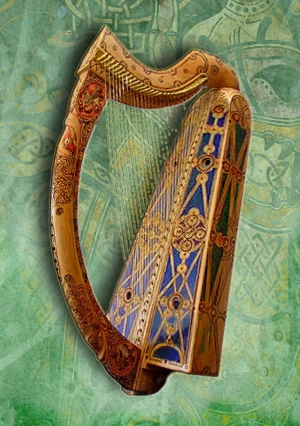
Another important symbol associated with Aengus is his magical harp. Music and poetry are key elements of Aengus’s identity, and his harp is said to have the ability to inspire love and creativity.
In Irish mythology, music is often seen as a magical force that can evoke powerful emotions and even change the course of events. Like his other qualities, Aengus’s harp is a tool through which he can express and spread love.
The harp’s connection to Aengus emphasises his role as a god of romantic love and as one who inspires creativity, art, and beauty in the world.
Music has the power to touch the heart, much like Aengus’s influence on those around him. His harp symbolises his ability to move others with his artistry and to awaken deep feelings in both gods and mortals.
Aengus’s symbols of birds and his magical harp reflect his nature as a god who represents not only love but also beauty, grace, and the transformative power of art and music.
Through these symbols, Aengus is remembered as a deity who connects love with the creativity that can change the world.
Key Themes in Aengus’s Mythology
Love and Desire
One of the central themes in Aengus’s mythology is love and desire. Aengus is often seen as the embodiment of idealised love, representing the kind of pure, passionate affection that transcends all obstacles.
His deep longing for Caer Ibormeith is a perfect example of this. Aengus’s love is not a simple infatuation but a profound and unshakeable devotion. His dreams of Caer and his relentless search to be with her show how powerful and all-consuming love can be.
Aengus’s story teaches us about romantic longing—the kind of love that drives a person to go to great lengths, overcome any challenge, and pursue their heart’s desire, no matter how difficult the journey.
This love is about attraction, deep emotional connection, and commitment. Aengus’s devotion to Caer, even when she is under a magical curse, shows the strength and purity of his feelings.
In this way, Aengus represents a pure, ideal, and everlasting love that can inspire anyone to follow their heart.
Youth and Beauty
Aengus is closely tied to youth, beauty, and passion. He is often depicted as a young, handsome god full of energy and vitality. His eternal youth symbolises the unwavering beauty and passion that never fades.
In Irish mythology, youth is often seen as a time of beauty and freedom. Aengus embodies these qualities to the fullest. His youthful appearance reflects the timeless nature of love, showing that love, beauty, and passion do not have to fade with age.
Aengus’s association with beauty is not just physical; it’s also linked to the inner beauty that love brings. His love for Caer is not just based on her appearance but on the deep connection they share.
This reflects a broader theme in Irish myth: love transcends the superficial and connects people on a deeper, more profound level.
Transformation
Another critical theme in Aengus’s mythology is transformation. Aengus’s love story with Caer perfectly shows how love and transformation deeply intertwine in Irish myths.
Caer’s transformation into a swan is a magical challenge that Aengus must overcome to be with her. This transformation symbolises how love can bring about change—whether it’s a change in form, identity, or how people see the world.
In Aengus and Caer’s story, transformation also reflects the power of love to overcome challenges. Aengus’s determination to be with Caer, even when she is a swan, shows how love can inspire change and transformation in the hearts of those who pursue it.
The theme of transformation in love reminds us that love is not always easy. Still, it can bring about powerful changes that make people stronger and more determined.
These themes—love and desire, youth and beauty, and transformation—come together in Aengus’s story to create a timeless myth about the power of love.
His tale teaches us that love is not only a powerful force that drives us but also a transformative one that can shape our lives and hearts in unexpected ways.
